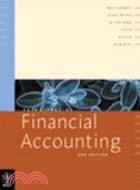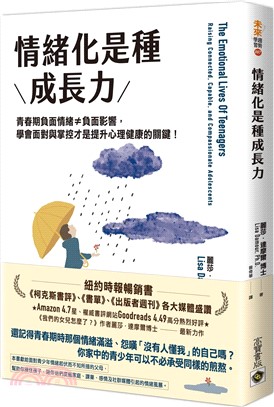PRINCIPLES OF FINANCIAL ACCOUNTING 2E
商品資訊
定價
:NT$ 1450 元優惠價
:95 折 1378 元
領券後再享88折起
領
團購優惠券A
8本以上且滿1500元
再享89折,單本省下152元
再享89折,單本省下152元
領
無庫存,下單後進貨(採購期約4~10個工作天)
可得紅利積點:41 點
相關商品
商品簡介
作者簡介
目次
商品簡介
In its US edition, ‘Principles of Accounting’ has been a market leading introductory accounting textbook for over 20 years. The Australasian adaptation of this highly regarded textbook accentuates its relevance to both students and academics alike with its constructive pedagogical structure, application of accounting to a wider business environment, and clear, easy-to-understand writing style.
As accounting is the international language of business, with many students expecting their qualifications to open career opportunities internationally, ‘Principles of Financial Accounting 2nd edition’ aligns to the conceptual framework and financial reporting requirements under IFRS, as well as presenting real company financial information from the Australasian region. Throughout all chapters, accounting processes and systems are applied and illustrated with either real businesses or constructive hypothetical examples.
A unique feature of the textbook is that it can be used in either a one semester or two semester introductory accounting subject. Students who study with this textbook will be equipped with knowledge and skills required for their further accounting studies and eventual career as an accounting professional.
* Updated in accordance with IFRS’s and changes in the Framework
* Integration of real company financial information to illustrate or reiterate key accounting processes and/or chapter content
* Thorough discussion of financial reporting requirements and presentation, income statements, statement of financial position, statement of cash flow and statements of changes in equity
* Assumes various end-users of accounting information, discussing the impact of accounting on various aspects of the business
* Workbook Examples are contained in the Before You Go On feature and require students to complete the example by completing an accounting proforma like a general journal and trial balance
* General journal entries presented as accounting equations to illustrate how debits and credits affect either assets, liabilities or the equity position of the business, and inflow or outflow of cash into the business
* Due to the importance of service industries in the Australasian region, the management accounting chapters contain illustrations and applications to service industries.
* Chapter Scene Setter presents an overview of the chapter and will help the student understand the context of the accounting information presented. In many chapters, the Scene Setter is based upon financial information for a real company with a discussion integrated in the chapter
* Helpful Hint comments in the minor column
* Before You Go On sections follow each key topic
* Review it questions prompt the students to review the key point that has been studied. This feature is designed so that students can recognise if they need to read the section again
* Action Plans - Problem-solving strategies accompany the Before You Go On and Do It exercises and Demonstration Problems in each chapter
* Accounting in Action Boxes - These applied boxes give students glimpses into the real world of business—including Ethics Insights, International Insights, e-Business Insights, and Business Insights.
* Marginal Check Figures - These self-checks appear alongside the A and B Problems and provide a key checking number (e.g. Trial Balance total) through the problem to help students know they’re on the right track
* A Comprehensive Problem - Selected chapters (Chs. 4, 7, 10, 12, 16, 17, and 27) feature a problem that pulls together topics students have learned over several chapters
* Broadening Your Perspective – a series of case studies that focus on financial analysis, interpretation, ethics and research will apply the concepts presented in the chapter.
As accounting is the international language of business, with many students expecting their qualifications to open career opportunities internationally, ‘Principles of Financial Accounting 2nd edition’ aligns to the conceptual framework and financial reporting requirements under IFRS, as well as presenting real company financial information from the Australasian region. Throughout all chapters, accounting processes and systems are applied and illustrated with either real businesses or constructive hypothetical examples.
A unique feature of the textbook is that it can be used in either a one semester or two semester introductory accounting subject. Students who study with this textbook will be equipped with knowledge and skills required for their further accounting studies and eventual career as an accounting professional.
* Updated in accordance with IFRS’s and changes in the Framework
* Integration of real company financial information to illustrate or reiterate key accounting processes and/or chapter content
* Thorough discussion of financial reporting requirements and presentation, income statements, statement of financial position, statement of cash flow and statements of changes in equity
* Assumes various end-users of accounting information, discussing the impact of accounting on various aspects of the business
* Workbook Examples are contained in the Before You Go On feature and require students to complete the example by completing an accounting proforma like a general journal and trial balance
* General journal entries presented as accounting equations to illustrate how debits and credits affect either assets, liabilities or the equity position of the business, and inflow or outflow of cash into the business
* Due to the importance of service industries in the Australasian region, the management accounting chapters contain illustrations and applications to service industries.
* Chapter Scene Setter presents an overview of the chapter and will help the student understand the context of the accounting information presented. In many chapters, the Scene Setter is based upon financial information for a real company with a discussion integrated in the chapter
* Helpful Hint comments in the minor column
* Before You Go On sections follow each key topic
* Review it questions prompt the students to review the key point that has been studied. This feature is designed so that students can recognise if they need to read the section again
* Action Plans - Problem-solving strategies accompany the Before You Go On and Do It exercises and Demonstration Problems in each chapter
* Accounting in Action Boxes - These applied boxes give students glimpses into the real world of business—including Ethics Insights, International Insights, e-Business Insights, and Business Insights.
* Marginal Check Figures - These self-checks appear alongside the A and B Problems and provide a key checking number (e.g. Trial Balance total) through the problem to help students know they’re on the right track
* A Comprehensive Problem - Selected chapters (Chs. 4, 7, 10, 12, 16, 17, and 27) feature a problem that pulls together topics students have learned over several chapters
* Broadening Your Perspective – a series of case studies that focus on financial analysis, interpretation, ethics and research will apply the concepts presented in the chapter.
作者簡介
Professor Keryn Chalmers, BCom, Grad Dipl, PhD, joined Monash University, Department of Accounting and Finance, in 2003. For 15 years prior to this she was with the School of Accounting and Finance at Victoria University. Her teaching responsibilities at the undergraduate and postgraduate levels have primarily been in fi nancial accounting and fi nancial analysis. Keryn is an active researcher in the fi nancial accounting and fi nancial reporting area, specifically in relation to accounting policy and disclosure choices of management.
Lorena Mitrione, BCom, MBus, CPA, joined Monash University, Department of Accounting and Finance, in 2009 as a lecturer. For 12 years prior to this, she worked at CPA Australia. Since 2001 she was the CPA Program Manager responsible for the development and maintenance of CPA Program materials and examinations. In this role Lorena developed a sound sense of the requirements for accounting learning materials while maintaining an up-todate knowledge of accounting standards, accounting research, technical accounting matters and business practices.
Michelle Fyfe, BCom Hon, BBus, CA, is a corporate accountant for a top 100 listed Australian company working in the corporate division producing external fi nancial reports. Prior to this she worked as a lecturer at Monash University, Department of Accounting and Finance. She has also had extensive working experience in chartered fi rms and industry within Australia and the United Kingdom. Michelle also ran a consultancy business for 2 years helping small businesses develop accounting systems and deal with current taxation regulations.
Lorena Mitrione, BCom, MBus, CPA, joined Monash University, Department of Accounting and Finance, in 2009 as a lecturer. For 12 years prior to this, she worked at CPA Australia. Since 2001 she was the CPA Program Manager responsible for the development and maintenance of CPA Program materials and examinations. In this role Lorena developed a sound sense of the requirements for accounting learning materials while maintaining an up-todate knowledge of accounting standards, accounting research, technical accounting matters and business practices.
Michelle Fyfe, BCom Hon, BBus, CA, is a corporate accountant for a top 100 listed Australian company working in the corporate division producing external fi nancial reports. Prior to this she worked as a lecturer at Monash University, Department of Accounting and Finance. She has also had extensive working experience in chartered fi rms and industry within Australia and the United Kingdom. Michelle also ran a consultancy business for 2 years helping small businesses develop accounting systems and deal with current taxation regulations.
目次
How to use this book.
Active lecturer and student resource material.
Use WileyPLUS.
Preface.
Acknowledgements.
How do you learn best?
Learning styles chart.
Chapter 1. Accounting in Action.
Why study accounting?
What is accounting?
The building blocks of accounting.
Using the building blocks.
Financial Statements.
Appendix: The accounting profession.
Chapter 2. The recording process.
The account.
Steps in the recording process.
The recording process illustrated.
The trial balance.
Chapter 3. Adjusting the accounts.
Timing issues.
The basics of adjusting entries.
The adjusted trial balance and financial statements.
Appendix: Alternative treatment of prepaid expenses and unearned income.
Chapter 4. Completion of the accounting cycle.
Using a worksheet.
Closing the books.
Summary of accounting cycle.
Classified balance sheet.
Appendix: Reversing entries.
Chapter 5. Accounting for retail operations.
Retail operations.
Recording purchases and sales of inventory.
Completing the accounting cycle.
Forms of financial statements.
Determining cost of goods sold under a periodic system.
Appendix 5A: Periodic inventory system.
Appendix 5B: Worksheet for a retail business.
Appendix 5C: The good and service tax.
Chapter 6. Inventories.
Inventory basics.
Inventory costing under a periodic inventory system.
Valuing inventory at the lower of cost and net realisable value.
Inventory errors.
Statement presentation and analysis.
Appendix 6A: Inventory cost flow methods in perpetual inventory systems.
Appendix 6B: Estimating inventories.
Chapter 7. Accounting information systems.
Basic concepts of accounting information systems.
Subsidiary ledgers.
Special journals.
Appendix: The goods and services tax.
Chapter 8. Internal control and cash.
Internal control.
Cash controls.
Use of a bank.
Reporting cash.
Chapter 9. Accounting for receivables.
Accounts receivables.
Notes receivables.
Financial statement presentation & analysis.
Chapter 10. Property, plant & equipment; intangible assets and goodwill; mineral resources and biological assets.
Property, plant and equipment.
Intangible assets and goodwill.
Mineral resources.
Biological assets.
Presentation and analysis of non-current assets in the financial statements.
Appendix: Exchange of property, plant and equipment assets.
Chapter 11. Current Liabilities and payroll accounting.
Accounting for current liabilities.
Provisions and contingent liabilities.
Payroll accounting.
Chapter 12. Accounting concepts, assumptions & principles.
Generally accepted accounting principles.
The framework of accounting.
Concepts of capital and capital maintenance.
Assumptions.
Principles.
Chapter 13. Accounting for partnerships.
Partnership form of entity.
Basic partnership accounting.
Admission of a partner.
Withdrawal of a partner.
Liquidation of a partnership.
Chapter 14. Companies: share capital.
Companies: an overview.
Accounting for share issues.
Accounting for share buy-backs.
Preference shares.
Statement presentation and analysis.
Chapter 15. Companies: dividends, retained profits and income reporting.
Dividends.
Retained earnings.
Company income statements.
Earnings per share.
Chapter 16. Non-current liabilities.
Bonds basics.
Accounting for bond issues.
Accounting for bond retirements.
Accounting for other non-current liabilities.
Statement of presentation and analysis.
Appendix 16A: Present value concepts related to bond pricing.
Appendix 16B: Effective-interest amortisation.
Appendix 16C: Straight-line amortisation.
Chapter 17. Investments.
Why entities invest?
Accounting for debt investments.
Accounting for equity investments.
Valuing and reporting investments.
Chapter 18. Cash flow statement.
The cash flow statement: usefulness and format.
Section 1 Cash flow statement – direct method.
Step 1: Operating activities.
Step 2: Investing and financing activities.
Step 3: Net change in cash.
Section 2 Cash flow statement – indirect method.
Step 1: Operating activities.
Step 2: Investing and financing activities.
Step 3: Net change in cash.
The concept of free cash flow.
Appendix: Using a worksheet to prepare the cash flow statement – indirect method.
Chapter 19. Financial Statement analysis.
Basics of financial statement analysis.
Horizontal analysis.
Vertical analysis.
Ratio analysis.
Earnings persistence and irregular items.
Limitations of financial statement analysis.
Glossary.
Index.
Active lecturer and student resource material.
Use WileyPLUS.
Preface.
Acknowledgements.
How do you learn best?
Learning styles chart.
Chapter 1. Accounting in Action.
Why study accounting?
What is accounting?
The building blocks of accounting.
Using the building blocks.
Financial Statements.
Appendix: The accounting profession.
Chapter 2. The recording process.
The account.
Steps in the recording process.
The recording process illustrated.
The trial balance.
Chapter 3. Adjusting the accounts.
Timing issues.
The basics of adjusting entries.
The adjusted trial balance and financial statements.
Appendix: Alternative treatment of prepaid expenses and unearned income.
Chapter 4. Completion of the accounting cycle.
Using a worksheet.
Closing the books.
Summary of accounting cycle.
Classified balance sheet.
Appendix: Reversing entries.
Chapter 5. Accounting for retail operations.
Retail operations.
Recording purchases and sales of inventory.
Completing the accounting cycle.
Forms of financial statements.
Determining cost of goods sold under a periodic system.
Appendix 5A: Periodic inventory system.
Appendix 5B: Worksheet for a retail business.
Appendix 5C: The good and service tax.
Chapter 6. Inventories.
Inventory basics.
Inventory costing under a periodic inventory system.
Valuing inventory at the lower of cost and net realisable value.
Inventory errors.
Statement presentation and analysis.
Appendix 6A: Inventory cost flow methods in perpetual inventory systems.
Appendix 6B: Estimating inventories.
Chapter 7. Accounting information systems.
Basic concepts of accounting information systems.
Subsidiary ledgers.
Special journals.
Appendix: The goods and services tax.
Chapter 8. Internal control and cash.
Internal control.
Cash controls.
Use of a bank.
Reporting cash.
Chapter 9. Accounting for receivables.
Accounts receivables.
Notes receivables.
Financial statement presentation & analysis.
Chapter 10. Property, plant & equipment; intangible assets and goodwill; mineral resources and biological assets.
Property, plant and equipment.
Intangible assets and goodwill.
Mineral resources.
Biological assets.
Presentation and analysis of non-current assets in the financial statements.
Appendix: Exchange of property, plant and equipment assets.
Chapter 11. Current Liabilities and payroll accounting.
Accounting for current liabilities.
Provisions and contingent liabilities.
Payroll accounting.
Chapter 12. Accounting concepts, assumptions & principles.
Generally accepted accounting principles.
The framework of accounting.
Concepts of capital and capital maintenance.
Assumptions.
Principles.
Chapter 13. Accounting for partnerships.
Partnership form of entity.
Basic partnership accounting.
Admission of a partner.
Withdrawal of a partner.
Liquidation of a partnership.
Chapter 14. Companies: share capital.
Companies: an overview.
Accounting for share issues.
Accounting for share buy-backs.
Preference shares.
Statement presentation and analysis.
Chapter 15. Companies: dividends, retained profits and income reporting.
Dividends.
Retained earnings.
Company income statements.
Earnings per share.
Chapter 16. Non-current liabilities.
Bonds basics.
Accounting for bond issues.
Accounting for bond retirements.
Accounting for other non-current liabilities.
Statement of presentation and analysis.
Appendix 16A: Present value concepts related to bond pricing.
Appendix 16B: Effective-interest amortisation.
Appendix 16C: Straight-line amortisation.
Chapter 17. Investments.
Why entities invest?
Accounting for debt investments.
Accounting for equity investments.
Valuing and reporting investments.
Chapter 18. Cash flow statement.
The cash flow statement: usefulness and format.
Section 1 Cash flow statement – direct method.
Step 1: Operating activities.
Step 2: Investing and financing activities.
Step 3: Net change in cash.
Section 2 Cash flow statement – indirect method.
Step 1: Operating activities.
Step 2: Investing and financing activities.
Step 3: Net change in cash.
The concept of free cash flow.
Appendix: Using a worksheet to prepare the cash flow statement – indirect method.
Chapter 19. Financial Statement analysis.
Basics of financial statement analysis.
Horizontal analysis.
Vertical analysis.
Ratio analysis.
Earnings persistence and irregular items.
Limitations of financial statement analysis.
Glossary.
Index.
主題書展
更多
主題書展
更多書展本週66折
您曾經瀏覽過的商品
購物須知
為了保護您的權益,「三民網路書店」提供會員七日商品鑑賞期(收到商品為起始日)。
若要辦理退貨,請在商品鑑賞期內寄回,且商品必須是全新狀態與完整包裝(商品、附件、發票、隨貨贈品等)否則恕不接受退貨。

























